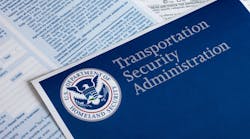Trucking groups wasted no time in staking out their positions for and against the proposed federal mandate for speed limiters on heavy-duty trucks. Proposed by National Highway Traffic Safety Administration (NHTSA) and Federal Motor Carrier Safety Administration (FMCSA), the mandate would require devices set to a maximum speed, a safety measure that could save lives and more than $1 billion in fuel costs each year.
The proposal would establish safety standards requiring all newly manufactured US trucks, buses, and multipurpose passenger vehicles with a gross vehicle weight rating more than 26,000 pounds to come equipped with speed limiting devices. The proposal discusses the benefits of setting the maximum speed at 60, 65, and 68 miles per hour, but NHTSA and FMCSA would consider other speeds based on public input.
“This is basic physics,” said NHTSA Administrator Mark Rosekind. “Even small increases in speed have large effects on the force of impact. Setting the speed limit on heavy vehicles makes sense for safety and the environment.”
FMCSA Administrator T F Scott Darling III said: “Safe trucking moves our economy and safe bus operations transport our loved ones. This proposal will save lives while ensuring that our nation’s fleet of large commercial vehicles operates efficiently.”
Motor carriers operating commercial vehicles in interstate commerce would be responsible for maintaining the speed limiting devices at or below the designated speed for the service life of the vehicle under the proposal. While the maximum set travel speed will be determined in the final rule, estimates included in the proposal demonstrate that limiting heavy vehicles will save lives.
The American Trucking Associations hailed FMCSA and NHTSA proposal as a potential step forward for safety. “We are pleased NHTSA and FMCSA have, almost 10 years after we first petitioned them, released this proposal to mandate the electronic limiting of commercial vehicle speeds,” said ATA President and CEO Chris Spear. “Speed is a major contributor to truck accidents and by reducing speeds, we believe we can contribute to a reduction in accidents and fatalities on our highways.”
In 2006, ATA adopted a policy in favor of limiting the maximum speed of new trucks to 68 miles per hour. Later that year, the Association petitioned FMCSA and NHTSA to issue a regulation requiring their use. In 2008, as part of ATA’s 18-point highway safety agenda, the federation endorsed a national speed limit of 65 mph for all vehicles.
“As an industry, we cannot be afraid of technology, but we also must make sure that technology has proven benefits,” Spear said. “Carriers who already voluntarily use speed limiters have found significant safety, as well as fuel efficiency and equipment lifespan benefits with little to no negative impact on productivity. We will be carefully reviewing and commenting upon this proposal.”
A very different viewpoint comes from the Owner-Operator Independent Drivers Association (OOIDA). The national association of small-business truckers says the government’s proposal to mandate speed limiting devices on large trucks would be dangerous for all highway users. Such devices would create speed differentials leading to more crashes and promoting road rage among other motorists.
“Highways are safest when all vehicles travel at the same relative speed,” said Todd Spencer. “This wisdom has always been true and has not ever changed.”
OOIDA also points out that speed limit devices actually take control out of the hands of drivers in that there are a number of scenarios that require drivers to accelerate in order to avoid danger. “No technology can replace the safest thing to put in a truck, which is a well-trained driver,” Spencer said.
Comments on the proposed rule can be submitted at www.regulations.gov.









